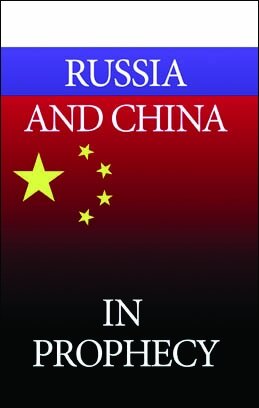
China: A Giant Rises
Harp Sangha is the ceo of Nevada-based Douglas Lake Minerals. Every four to six weeks, he hops a plane in Vancouver and whisks off over the Pacific to East Africa. Sangha is one of hundreds of mining entrepreneurs working overtime, exploring for and developing Africa’s vast mineral wealth. In Sangha’s case, it’s Tanzanian gold and emeralds, among other base metal deposits, that Douglas Lake Minerals is finding.
Five and a half thousand miles away from Tanzania, along the southern coastline of China’s Guangdong Province, across the bay from Hong Kong, lies the “boom town” of Shenzhen. Thirty years ago, Shenzhen was mostly dirt roads with rice paddies, where farmers gazed across chain-link fence at the prosperous British colony of Hong Kong.
Today, the cosmopolitan city of 18 million is twice the size of Los Angeles, and its densely packed skyscrapers rival downtown Manhattan—except most of Shenzhen’s towers are brand new. Each year, close to 8 million rural Chinese trudge to the coasts in search of jobs and a better life. So it is no surprise that the city is growing at double-digit rates. To accommodate these new urban dwellers, China constructs the equivalent of Detroit plus Chicago each year—and has been doing so for about the past decade. As of last year, there were more Chinese with cell phones than there were people in the United States.
Shenzhen boasts multi-story shopping malls, luxury condominiums and broad, landscaped boulevards. It includes a burgeoning foreign national community with world-class restaurants and amenities including nearby Mission Hills, the world’s largest golf course, with 216 championship holes. Shenzhen typifies the growth that is occurring all across China’s eastern seaboard.
Believe it or not, the people in Shenzhen and companies like Douglas Lake Minerals are connected. And that connection is a stark indicator of the economic ascension of China and the decline of America.
The most alarming aspect of China’s growth is that it has largely come at the expense of the United States.
The Deindustrialization of America
Following World War ii, America quickly rose to economic dominance. “Made in the U.S.A.” was stamped on exports sent around the world. It was synonymous with quality as well as quantity. The U.S. produced just about everything and had need of nothing.
In the 1950s, for example, the United States manufactured half of all machine tools in the world. Machine tools, such as lathes, milling machines, grinders, stamping machines and the other large, motorized tools used in factories, are the most essential component of a nation’s industrial base. All these were manufactured in America.
The U.S. now makes less than 6 percent of the world’s machine tools, and those found in America are more likely stamped “Made in” China, India, Germany, or some other country. Similarly, virtually all the hand tools in Wal-Mart and K-Mart are foreign-stamped—as are most of the clothes, plastic household goods, appliances, electronics, and toys—pretty much the whole store.
American manufacturing is a shell of its former self.
As of 2005, America imported 35 percent of its agriculture and construction machinery; 36 percent of industrial machinery; 43 percent of electrical lighting equipment; 44 percent of all engines, turbines, and power transmission equipment; 53 percent of communications equipment; 58 percent of commercial and service industry machinery; 75 percent of apparel; 79 percent of computer equipment; 90 percent of audio and video equipment; and 92 percent of the nation’s footwear. And these percentages have most likely risen since then.
With all that domestic manufacturing gone, there is no need for a strong mineral and mining industry to supply the factories either.
“I have traveled to Africa at least 30 times in the last four years; Tanzania, Democratic Republic of Congo, Rwanda, Kenya, and South Africa,” says Douglas Lake’s Harp Sangha. “I can tell you that I have yet to meet anyone from the U.S. looking to do business over there ….”
America’s Loss, China’s Gain
In contrast, China is in the midst of a massive industrialization, just like America at the turn of the last century, and Britain 200 years earlier. China has risen from relative obscurity to global preponderance in just a few short years. It is nothing short of astounding.
But that astounding growth is only possible for as long as China has access to abundant resources.
China’s factories, airports, shipping facilities, freeways, railroads, homes, hotels, shopping centers—cities—require massive amounts of concrete, iron, bauxite, tin and other minerals. Similarly, all that development requires cars, trucks, cranes, earthmovers, steamrollers, backhoes, excavators and other equipment—all of which require even more resources.
Likewise, China’s demand for coal and natural gas for power generation has skyrocketed, and if the number of nuclear power plants now in permitting get built, the nation’s demand for uranium will rise at a similar trajectory.
Just a year and a half ago, China surpassed the U.S. to become the world’s largest exporter. That’s right: Only a short five years ago America exported more than double the amount of China. Chinese shipping companies now operate some of the largest merchant fleets in the world. These fleets also require steel, oil, maintenance yards and harbors, all of which also require additional resources to construct and maintain.
“Effectively, the Chinese are the ones underwriting the entire resource sector,” confirms Adnan Kucukalic, equity strategist at Credit Suisse First Boston in Sydney. “If I was confident about my demand for resources, why wouldn’t I hedge myself against that?”
Okay, you get the point: China has an insatiable appetite for raw commodities.
Consequently, the Chinese are just about everywhere, snapping up strategic resources and supplies of essential minerals, and squeezing out the competition wherever possible. Where it can’t get the minerals directly, China is funding the explorers and buying up the producers. China recently purchased a $15 billion stake in British mining giant Rio Tinto, and now rumors abound that Chinese state-owned Baosteel is after a chunk of the world’s largest integrated miner, Australia-based bhp Billiton. Canada-based Cameco Corp., the world’s largest uranium mining company, is another corporation that Chinese interests are supposedly stalking.
But you can’t blame the people of Shenzhen. They have the industry and the economy that is growing at 10 percent per year. Consequently, they are willing to fund companies that can find and supply all the raw materials needed to ensure their nation’s growth. That is where companies like Douglas Lake Minerals come in.
“Our company has had absolutely no luck getting any funding or traction among the investment community in the usa,” Sangha says. “But, guess what? We recently signed a memorandum of understanding with three Chinese institutions, two mining institutes, and the China Development Bank, which is a policy bank. … I think we will have partners with very deep pockets.”
“How is it that the Chinese see the opportunity but the Americans do not?”
That’s a very good question. The short answer is that America isn’t growing or producing like it used to, so it doesn’t see the need to secure resources.
Faulty Ideology
The long answer is found in the way China’s and America’s respective societies have come to function. One economic ideology is based on production, the other on consumption.
In China and the rest of the industrializing world, they build factories that produce things. This creates real wealth. The emphasis in this kind of a society is on building and producing, which require resources. The disparity can be seen in the respective education systems as well. China graduates thousands of chemical engineers, physicists and mathematicians each year—many times more than their U.S. counterparts. Even American colleges are increasingly dominated by foreign post-graduate students.
America, in contrast, has become a nation of consumers and get-rich-quick artists. And it shows.
Year after year we close more factories; lay off the workers, outsource the production and sell the metal as scrap. Hooray for short-term profits. Then, for the rest of our lives, we pay foreigners for the very products we used to produce in the first place. The economic euthanasia continues: We then borrow the money back from these partners to buy flat-screen tvs, build fancy homes and wear designer clothing in the hope that living large and looking prosperous will somehow actually make us wealthier and happier too. America is deluding itself.
Even so, America is still clinging to life. Economic analysts say China still needs American consumers, and the wealth built by past generations can still be found in the U.S. But each day a bit more of America’s strength gets sapped, dollars flow from the West to the East; China becomes a little richer—and America, a little poorer.
The emphasis China is placing on manufacturing and mining shows clearly that it is the rising star. The fact that America no longer values industry and is no longer supporting its mining industry clearly illustrates that its days as a superpower are numbered.
Industry and manufacturing go hand in hand with national power. Throughout history, it has been the industrial powers that have risen to global dominance and influence. Just look at World War ii. History definitely repeats itself.
The sun is rising on a new global power and setting on an old one. It has happened many times before, and it is happening again. You are living through it—history in the making.

Did you know you are also living through the fulfillment of prophecy? The Bible clearly predicts that China will, for a short period, become a global superpower after America has declined. If you are interested in those scriptural prophecies, read Russia and China in Prophecy and The United States and Britain in Prophecy.
